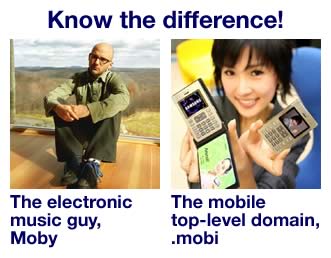
Maybe I'm getting old, but trying to catch all the interesting stuff at the Ajax Experience conference feels like running a marathon. The conference is packed with sessions and other activities; days 1 and 2 each have 12 or more hours in their schedule. Here's my first report, covering the opening keynote.
After a nice breakfast -- kudos to the organizers for going above and beyond the standard "continental" and throwing in some eggs, sausages, bacon and home fries -- the conference began in earnest with a quick "welcome" keynote by the Ajaxians, Ben Galbraith and Dion Almaer.
I imagine that for the organizers of a conference, doing a keynote has got to be physically trying. They usually have had very little sleep the night before, what with the last-minute preparations and things that always arise before the start of a conference. As a result, opening speeches by conference organizers are fairly lackluster -- but this one wasn't! Instead, we got a lively, funny, well-rehearsed start to the conference.
In addition to the typical bits of information about the conference, Ben and Dion gave an Ajax "state of the union address", in which they shared their thoughts about the current state of Ajax.
They posed this question: What the conference would be called if Jesse James Garrett hadn't coined the acronym "Ajax"? They listed a number of possibilities, including "The JavaScript Experience" and "The DHTML Experience", but then explained that although at least correct to one degree or another in a technical sense, these names would fail to capture the true meaning of what we're doing, and that's building better user experience for web applications.
It's for this reason that they say it's "Ajax" and not "AJAX": Asynchronous JavaScript and XML describes only a portion of the technical underpinnings and fail to capture the real revolution in how web apps are being written today.
"Everything old is new again," they said. It's true -- the technical prerequisites for Ajax have been around since Microsoft introduced XHR (that's the popular shorthand for XMLHttpRequest, the browser technology that makes Ajax possible) into Internet Explorer in 1997. Being a browser-specific feature, it wasn't used by many developers. Even when XHR was finally implemented in Mozilla-based browsers in 2002, it wasn't one of the features that was touted inthe press release. We'll have to assign bonus cool points to Brent Ashley, who figured out that there might be some very interesting uses for XHR before the wave of applications like GMail, Google Maps and Oddpost led Jesse James Garrett to coin the buzzword after which this conference is named.
Many user interface specialists have eschewed web development in favour of building so-called "fat clients" because of the severe constraints imposed by working within the browser. These constraints had a silver lining; Ben and Dion pointed to a quote by Marissa Mayer (Google's VP of Search Products and User Experience) in BusinessWeek:
Creativity is often misunderstood. People often think of it in terms of artistic work -- unbridled, unguided effort that leads to beautiful effect. If you look deeper, however, you'll find that some of the most inspiring art forms -- haikus, sonatas, religious paintings -- are fraught with constraints. They're beautiful because creativity triumphed over the rules. Constraints shape and focus problems, and provide clear challenges to overcome as well as inspiration. Creativity, in fact, thrives best when constrained.
They talked about how far Web 2.0 can go with the current set of constraints. We've got web applications that are coming close to providing a user experience similar to desktop apps. We've got interesting approaches like Comet,where the server continually pushes or streams data to the web client rather than the web client doing the polling. We're only seeing the first appearance of JavaScript frameworks, which are emerging with different philosophies, from MochiKit's "JavaScript sucks" point-of-view (Mochikit's slogan is "Making JavaScript Suck Less") to Dojo's "JavaScript is T3H SEXY".
As for whether our current constraints will be loosened, Ben and Dion don't think that will happen any time soon. Although IE7 fixes some problems, it runs only on Windows XP and later versions of Windows; Ben and Dion said that "IE6 will always be with us". There are some interesting developments with SVG and Canvas, but these have only been implemented in Firefox and Safari. As for things like Flash or Microsoft's "Flash-killer", WPF/E, time will tell.
Stressing that the Ajax Experience is about the User Experience, Ben and Dion talked about the introduction of a design track to the conference and also encouraged people to attend the accessibility presentations.
It was a well-done opening keynote, and it set the stage for a very busy, very informative day 1 at the Ajax Experience. Well done, guys.





































 Today is
Today is 







